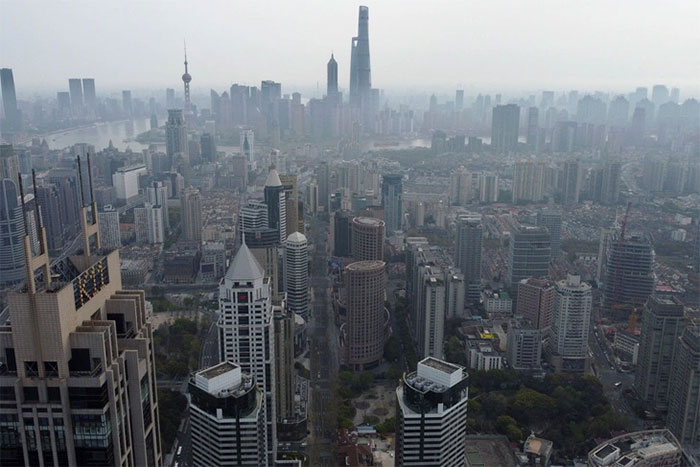Building dense houses, 45% of major Chinese cities are sinking rapidly
Satellite-based research shows that nearly half of China's major cities are experiencing moderate to severe subsidence, putting millions of people at risk.
The research was conducted by a group of scientists from South China Normal University (China) and published in the prestigious Science magazine on April 19.

Density of buildings in Shanghai, China - (Photo: REUTERS).
Based on satellite data, the study authors found that 45% of Chinese urban areas are sinking faster than 3mm per year , of which up to 16% are sinking at more than 10mm/year. This is a consequence not only due to the decrease in underground water levels but also due to the weight of construction works on the ground, according to AFP News Agency.
With China's urban population already exceeding 900 million people, "even a small portion of land subsidence in China could become a significant threat to urban life ," according to the research team.
Tianjin city , home to more than 15 million people, was identified as one of the most severely affected localities . Last year, 3,000 residents were evacuated after a "sudden geological disaster" that investigators blamed on groundwater depletion and geothermal mining.
Many localities that used to mine coal in China also suffered the consequences of subsidence. Authorities in these places are often forced to pump concrete into dilapidated coal mines to reinforce the soil.
Subsidence has cost China more than 7.5 billion yuan (about 1.04 billion USD) annually. It is predicted that over the next century, nearly a quarter of coastal areas could be below sea level, putting hundreds of millions of people at greater risk of flooding.
Expert Robert Nicholls at the Tyndall Center for Climate Change Research at the University of East Anglia (UK) commented that subsidence is truly a national problem in China . "It's also a microcosm of what's happening around the world ," Mr. Nicholls added.
Another study published last February showed that about 6.3 million square kilometers of land globally is at risk of subsidence. Among the hardest hit countries is Indonesia, with much of the capital Jakarta now below sea level.
According to Mr. Nicholls, cities can learn lessons from Tokyo (Japan), which sank about 5 meters until the government banned groundwater exploitation in the 1970s.
- Coastal cities are 'sinking' the fastest in the world
- The detailed process of building mini houses according to the standard of building real houses
- Build houses from coconut shells
- Video: Building houses with bacteria
- Video: Terrifying scene when stuck in a sinking ship
- Unique: Build houses like playing Lego
- Flood tide threatens 21 great cities
- Many big cities will sink under the sea
- Building environmentally friendly houses from industrial waste
- The mysterious story of the six Chinese who survived the sinking of the Titanic
- Video: Admire the skyscraper project
- Strange houses in the world
 Is the magnetic North Pole shift dangerous to humanity?
Is the magnetic North Pole shift dangerous to humanity? Washington legalizes the recycling of human bodies into fertilizer
Washington legalizes the recycling of human bodies into fertilizer Lightning stone - the mysterious guest
Lightning stone - the mysterious guest Stunned by the mysterious sunset, strange appearance
Stunned by the mysterious sunset, strange appearance